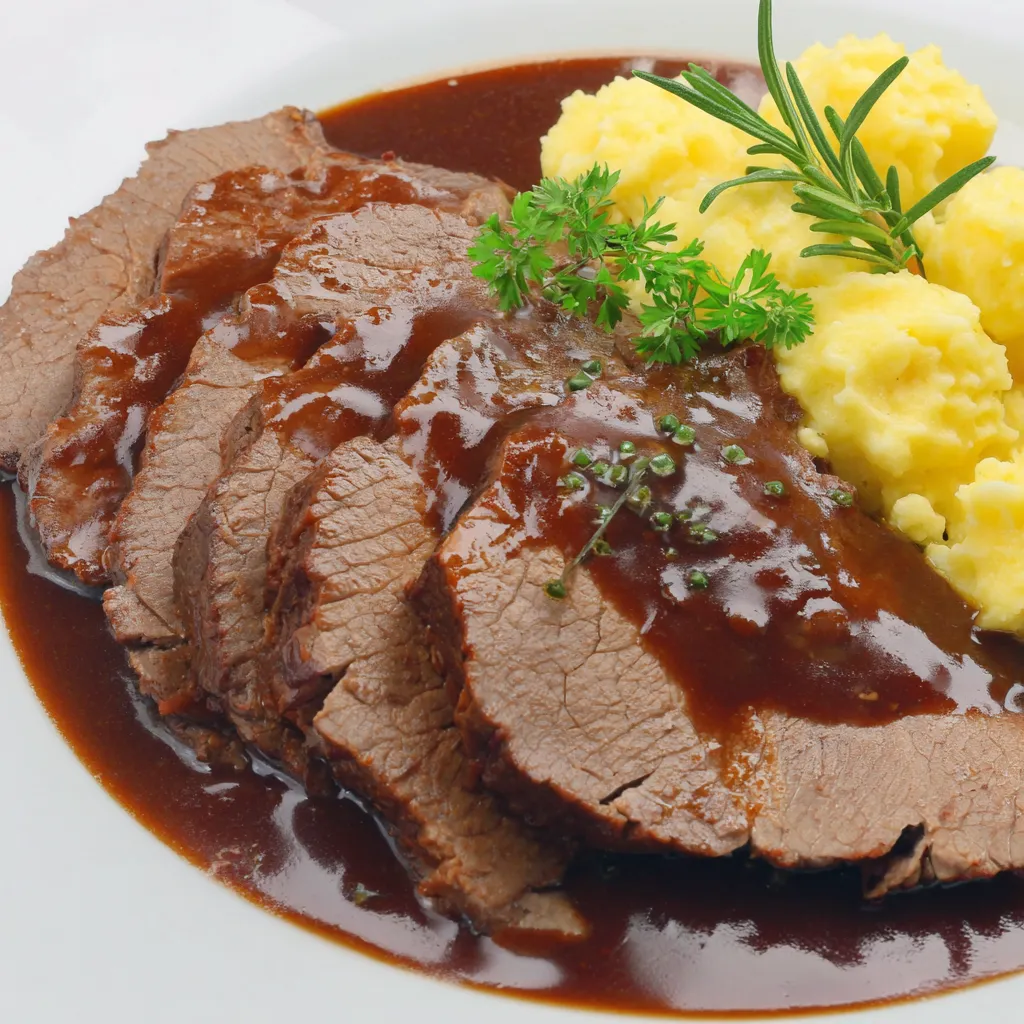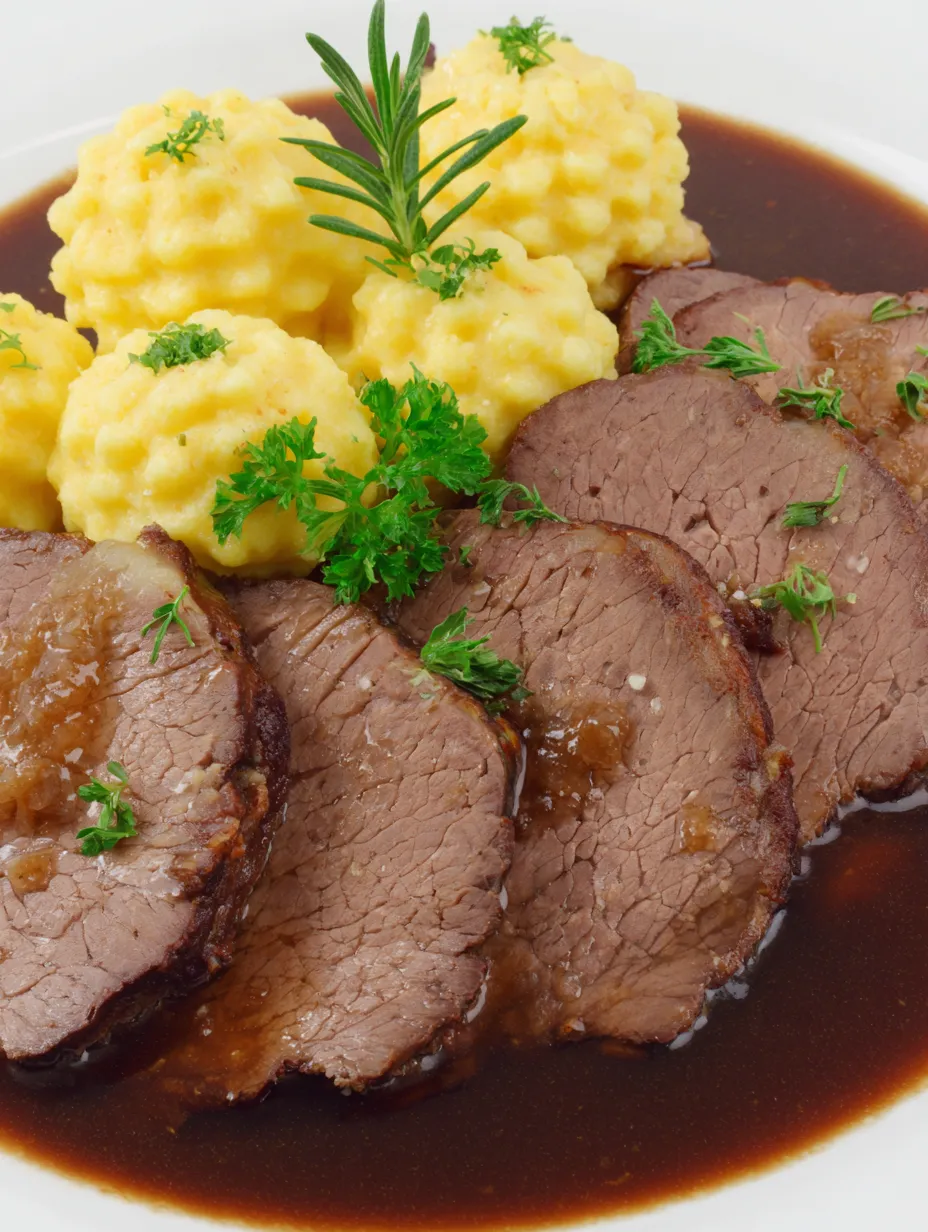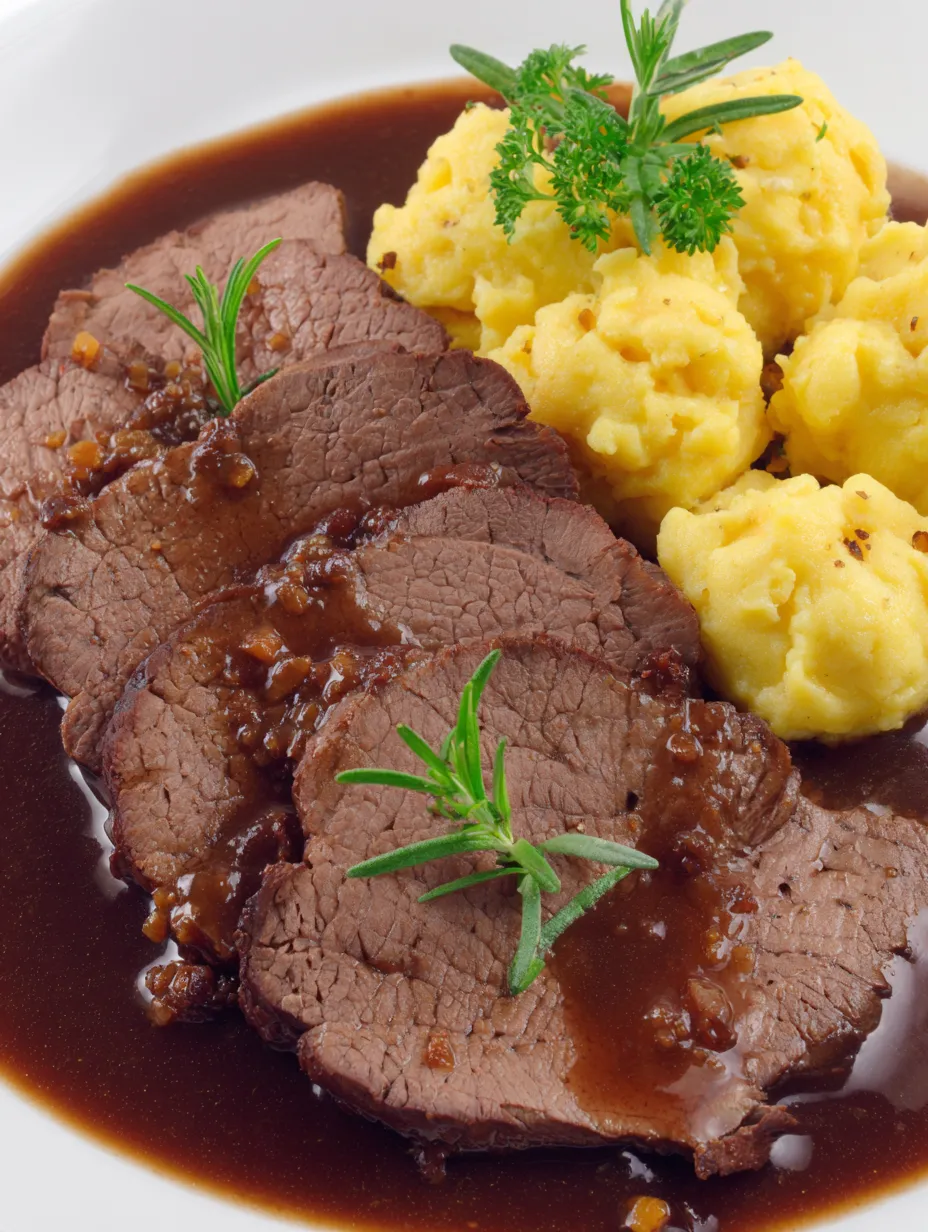 Save
Save
German Sauerbraten is the kind of meal that transforms a Sunday dinner into something truly special. The secret is a deep, tangy-sweet marinade soaked into beef for days before a long, slow roast that yields fork-tender slices and a sauce you will want to pour over everything.
The first time I tried Sauerbraten I was amazed at how the fragrant marinade worked its magic on the beef. My grandmother made it for holidays and now my friends request it for our fall gatherings.
Ingredients
- Red wine: brings tartness and depth so look for a bottle that is dry and affordable
- Red wine vinegar: is essential for signature tanginess and I pick one with good grape flavor
- Water: balances out the acidity
- Large onion: helps build sweetness after a long marinade
- Carrots: add subtle natural sweetness plus color
- Celery: gives a mellow base flavor
- Garlic cloves: unlock aromatics and complexity
- Bay leaves: infuse the marinade with deep herbal notes
- Whole black peppercorns: give gentle bite without overpowering spice
- Whole cloves: provide old world warmth choose whole for slow flavor release
- Juniper berries: optional but traditional bringing piney brightness
- Beef roast: cut like top round or chuck holds up to marination and slow cooking pick a cut with some marbling for tenderness
- Vegetable oil: necessary for a good sear pick a neutral oil
- Flour: helps thicken the sauce and builds rich texture
- Beef stock: deepens the sauce with savory notes
- Sugar: rounds out acidity with mellow sweetness
- Gingersnap cookies: optional but classic if you can find them they create incredible texture and a unique hint of spice in the sauce
- Egg noodles potatoes or red cabbage for serving: choose what feels comforting
- Fresh parsley for garnish: a sprinkle adds color and freshness
Step-by-Step Instructions
- Prepare the Marinade:
- Combine red wine red wine vinegar water sliced onion carrots celery garlic bay leaves black peppercorns cloves and juniper berries in a large bowl Stir well so flavors mix throughout Submerge the beef roast ensuring it is fully covered Cover tightly and refrigerate for two to three days turning beef occasionally for even soaking
- Strain and Dry:
- Remove beef from marinade after the marination and pat it dry with paper towels Strain marinade reserving both the liquid and vegetables Discard bay leaves and cloves Skim fat from the liquid surface for a clean sauce
- Sear the Beef:
- Preheat oven to 160 degrees Celsius Heat vegetable oil in a Dutch oven over medium high Sear beef roast on all sides for about two to three minutes each until brown This caramelizes the exterior and adds flavor
- Brown the Vegetables:
- Set beef aside Lower heat to medium Add the reserved marinade vegetables Sauté five to seven minutes until softened and just caramelized Sprinkle flour over vegetables and stir well Cook for another one to two minutes to remove flour taste
- Build the Sauce:
- Slowly pour in the reserved marinade scraping the pot bottom to release bits Add beef stock and sugar stirring until smooth Return seared beef to the pot nestling it in Add more stock if needed Bring to a gentle simmer
- Roast Low and Slow:
- Cover the pot and transfer to oven Roast for two and a half to three hours turning beef occasionally It is done when fork tender Check liquid halfway and add more stock if needed to prevent drying
- Finish the Sauce:
- Remove beef and let rest ten minutes Strain cooking liquid discard solids For a traditional thick sauce stir in crumbled gingersnap cookies and simmer until velvety Taste and season with salt and pepper
- Slice and Serve:
- Slice rest Sauerbraten thinly Arrange on a platter Spoon rich sauce over and garnish with chopped parsley Serve with noodles potatoes or red cabbage for true comfort

This recipe always reminds me of the ginger cookie aroma that fills the kitchen When I crumble them into the sauce my kids run in eager for dinner It is now our signal that a special meal is just about ready
Storage Tips
Leftover Sauerbraten keeps well covered in the refrigerator three to four days The flavors continue to deepen making it great for meal prep I like slicing the beef and storing it in the sauce to keep it moist If freezing use airtight containers and thaw gently in the fridge before reheating
Ingredient Substitutions
Use apple cider vinegar in place of red wine vinegar for a milder tang If you cannot find juniper berries simply skip them or add a strip of orange peel for an aromatic twist Brisket works in place of top round in a pinch but pick the best quality you can afford
Serving Suggestions
Traditionally I pair Sauerbraten with buttered egg noodles or creamy mashed potatoes It is just as comforting over spaetzle or with a side of braised red cabbage Add steamed green beans and crusty bread for soaking up extra sauce

Cultural Context
Sauerbraten is one of Germany’s oldest and most beloved recipes Often served at festive gatherings it was originally a way to tenderize tougher cuts of beef Today regional variations add ingredients like raisins or apple cider but the soul of the recipe always lies in the time and care of marinating the meat
Recipe FAQs
- → Why is marinating beef so long important for this dish?
The extended marinating time allows the beef to absorb deep flavors from the wine, vinegar, spices, and vegetables, making it both tender and aromatic throughout.
- → What cut of beef works best?
Top round or chuck roast are ideal for their ability to remain moist and flavorful during long, slow braising.
- → How do gingersnap cookies affect the sauce?
Crumbled gingersnaps add a hint of sweetness and help thicken the sauce, lending a unique traditional note to the finished dish.
- → What sides pair well with this meal?
Classic sides include egg noodles, boiled potatoes, or braised red cabbage for a complete meal with authentic texture and flavor contrasts.
- → Can I shorten the marinating process?
While a minimum of two days is recommended for full flavor, you can marinate overnight in a pinch, though the depth of taste may be less developed.
- → What’s the purpose of straining vegetables from the sauce?
Straining ensures a smooth, velvety sauce by removing solids, allowing the pure flavors of the marinade and beef to shine through.
